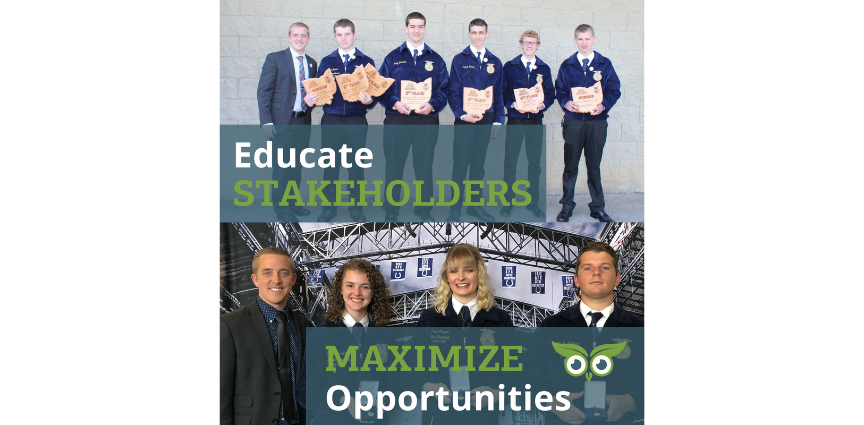
SAEs. Supervised Agricultural Experiences. Work-based Learning.
Whatever you call students’ experiential learning opportunities, the concept of students’ SAEs is not a complicated concept but one my students struggled to understand.
Not that they didn’t understand or couldn’t identify SAE projects, but they struggled to conceptualize the vast opportunities available in this component of the 3-circle model.
They were always drawn to a vegetable garden, livestock at the county fair or working for a local farmer, which are fantastic SAE projects. However, they rarely developed the unique, innovative or niche projects you often see on the national proficiency award stage.
One way I changed this perspective later in my teaching career was by involving stakeholders such as parents and community members into the conversation.
Through conversations with parents at our annual Freshmen Orientation Night or Open House, or mailing SAE letters to community members involved in agriculture to secure placement sites for summer jobs, I initiated this conversation with a simple Supervised Agricultural Experience brochure that accomplished the following:
-
Explained SAEs and their purpose
-
Provided advantages and examples of SAEs
-
Highlighted student testimonials
-
Identified how parents and community leaders could be involved
-
And extended my contact information
Something so simple snowballed into countless student opportunities within their Supervised Agricultural Experiences resulting in 10 visits to the national proficiency stage in six years.
Grab a copy of the Supervised Agricultural Experience Brochure I used HERE and start explaining SAEs to stakeholders to maximize this part of agricultural education.
